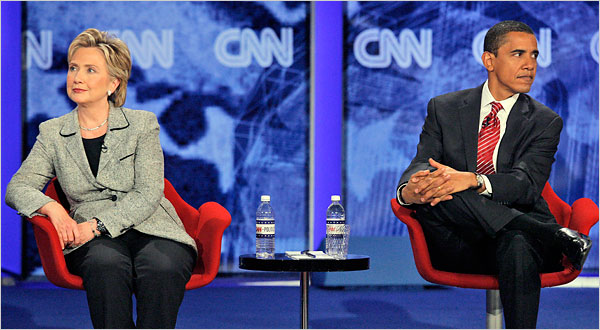 In preparation for the first meeting of Culture on the Edge, at the University of Alabama, the group looked at some resources that purport to study identity in a more dynamic, theoretically-engaged way–e.g., works devoted to studies of diaspora, hybridity, syncretism, etc.–in hopes of finding models for how to study the production and movement of identity but without (unintentionally, perhaps) reproducing the very thing one means to study.
In preparation for the first meeting of Culture on the Edge, at the University of Alabama, the group looked at some resources that purport to study identity in a more dynamic, theoretically-engaged way–e.g., works devoted to studies of diaspora, hybridity, syncretism, etc.–in hopes of finding models for how to study the production and movement of identity but without (unintentionally, perhaps) reproducing the very thing one means to study.
For instance, many before me have noted that the invention of modern historiography and the rise of the nation-state in the later nineteenth-century (let alone the invention of the literary genre now known as the novel) are not accidentally connected, inasmuch as writing the story of Germany or Britain necessarily presupposes, and thereby strengthens that very presupposition, that Germany and Britain are stable, uniform objects in the world that somehow act and endure despite seeming to change. The idea of the nation is thereby conserved all the better by writing its history–much like a family tree anchors a narrative that necessitates your own eventual existence. It may therefore be no coincidence that the historiographical energies of the nation-state (e.g., as exercised in its public schools and universities) are often focused rather closely on telling the origin/developmental tales of their own in-group (i.e., it is difficult to imagine a Department of History in any country not specializing in that country’s own past and then, as a second specialty, also telling the story of “our” international exploits with others). But it is equally tough to imagine a Department of Religious Studies or a Department of Political Science in, say, Canada or the U.S. not presuming the obviously crucial place in their curricula for mostly descriptive “Religion in Canada” courses or a series of specialized and interconnected classes on various aspects of the U.S. political system.
As mentioned in a previous post, among the various resources our group looked at early on was The Creolization Reader, presuming that this recent book (2010) would provide us with a useful sampling of some cutting edge works on this now popular, cross-disciplinary way into studying social change over time. But the problem of such studies–the way that examining apparent change can nonetheless reproduce an essential core–was evident in the Introduction’s opening lines; using the 2008 run for the Democratic party’s nomination for the U.S. Presidency as their example, the editors wrote:
Pitched against the familiar figure of Hilary Clinton was a gawky senator from Illinois with the strange name of Barack Obama. He did not fit the familiar categories. Was he black or white, African, African-American or plain American? Was he too black for the whites and too white for the blacks?
Familiar. Gawky. Strange. Based on what standard are these judgments made? (Not a few on the political right thought/think that about Clinton herself, by the way, indicating the norm the editors needed to adopt in order to see her as the familiar standard.) The problem here is in focusing on Obama rather than on the commonly circulating categories that made him stand out as interesting or as anomalous in the first place; for it is the dominant categorization of humans within the U.S. as being, in this case, either black or white, that could instead be our object of study, as opposed to taking each for granted as static, uniform standards and then studying this or that marginal social agent as “mixed” or as a creole. For if the definitions and boundaries of identity are themselves fluid historical products, whereby what counts as black or as white changes over time and place (I think of a good friend who once related how her own friend, from South America, perceived herself to be white, until she arrived in North America…), then allowing these boundaries to so sediment in our studies that we are only attracted to the moments where the boundaries are supposedly blended, fails to take seriously the always and already fluid nature of social life. What’s more, it also fails to recognize that the techniques used to continually manage the unruly cacophony that is historical existence (i.e., define it, sort it, and rank it), are our techniques, conducive to our interests, and thus the way we think the world ought to be.
So it seems to me that, despite seeming to be intellectually provocative, talk of mixed identities and blurred boundaries is a surprisingly conservative approach to our topic, for both are just techniques we use to deal with those moments when our systems fail to control an historical existence which, I presume, is likely rather more complicated, vague, and less signified than are our attempts to name it as either a this or a that. That we have no choice but to name and sort and use binary pairs to form an understanding of the world goes without saying, of course; that the anomalies we seem to discover are, in fact, byproducts of our own classificatory systems and not elusive species in the wild is, however, what we need to take into consideration. We therefore don’t need a theory to understand how prior raw materials are blended into new hybrid forms–for this is not a unique phenomenon; it is, instead, a synonym for culture, for historical, social existence itself. Instead, we need a theory to help us understand how we respond when our classification systems inevitably fail–how and when to decide that Hillary is the pure and familiar norm against which Barack is judged mixed and strange.
